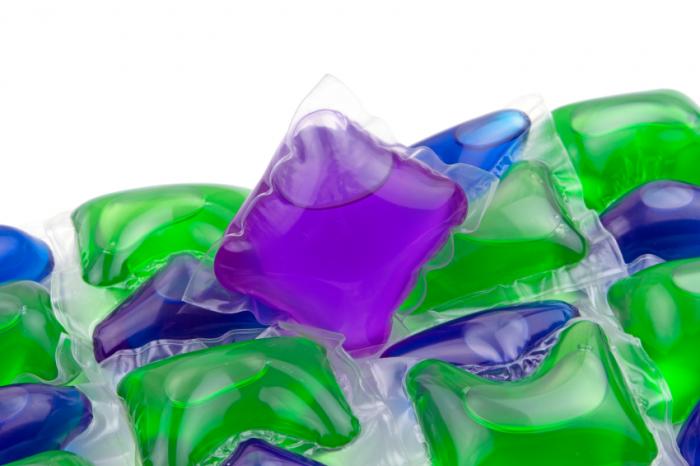
In 2012-13, poison control centers in the US received 17,230 calls related to children being exposed to chemicals in laundry detergent pods.
Senior author Dr. Gary Smith, director of the Center for Injury Research and Policy at the hospital, and colleagues publish their findings in the journal Pediatrics.
Since their introduction into supermarkets in the US in 2010, laundry detergent pods have grown in popularity. Convenience is the main appeal of these products; instead of having to measure out laundry powder, a user can simply pop a pre-measured detergent pod straight into the washing machine.
But although laundry detergent pods have their benefits, co-author Dr. Marcel J. Casavant, chief of toxicology at Nationwide Children’s Hospital, points out that the products may be appealing to young children.
“Laundry detergent pods are small, colorful and may look like candy or juice to a young child,” he says. “It can take just a few seconds for children to grab them, break them open and swallow the toxic chemicals they contain or get the chemicals in their eyes.”
And according to the team’s last research, this is exactly what is happening in many American households with young children.
One child an hour exposed to harmful chemicals in laundry detergent pods
Using 2012-13 data from the National Poison Data System, the researchers analyzed the outcomes of exposure to laundry detergent pods among children aged 6 years and under.
The team found that during the 1-year period, poison control centers in the US received 17,230 calls related to children being exposed to chemicals in laundry detergent pods – the equivalent to one child an hour. Of these, 769 children were hospitalized and one died.
Ingestion was the most common route of exposure, accounting for 79.7% of cases, and exposure was most common among children aged 1 and 2 years.
On analyzing the effects of laundry detergent exposure, the researchers found that 48% of children experienced vomiting, 13% experienced coughing or choking, 11% had eye pain or irritation, 7% experienced drowsiness or lethargy and 7% had red eye or conjunctivitis.
For 904 cases, the scenario in which a child had access to the pods was recorded. In 382 of these cases, the laundry detergent pod pack was left within the child’s sight. The pack was left open temporarily while a caregiver was distracted in 97 cases, stored inappropriately in 82 cases or stored in a low, unlocked cabinet in 54 cases.
Commenting on their findings, the researchers say:
“Laundry detergent pods are new products in the US marketplace that pose a serious poisoning risk to young children.
This nationwide study underscores the need for increased efforts to prevent exposure of young children to these products, which may include improvements in product packaging and labeling, development of a voluntary product safety standard and public education.”
The team notes that last year, one leading manufacturer of laundry detergent pods began changing its packaging to non-transparent casing. The manufacturer also included a warning label and additional latches to restrict child access. But Dr. Smith says that this is not yet a universal practice.
“It is not clear that any laundry detergent pods currently available are truly child resistant; a national safety standard is needed to make sure that all pod makers adopt safer packaging and labeling,” he adds.
For parents or caregivers of young children, the team makes the following recommendations:
- Use traditional laundry detergents instead of laundry pods, as they are much less toxic
- Store detergent pods out of sight from young children, preferably in a locked cabinet
- Ensure detergent pods are stored away immediately after use
- In case of emergency, keep the National Capital Poison Center number (1-800-222-1222) by your home phones and store it in your cell phone.
In April, Medical News Today reported on a study by researchers from the Centers for Disease Control and Prevention (CDC) revealing that e-cigarette-related calls to US poison centers soared in 2010-2014, from one call a month to 215.
Written by Honor Whiteman
